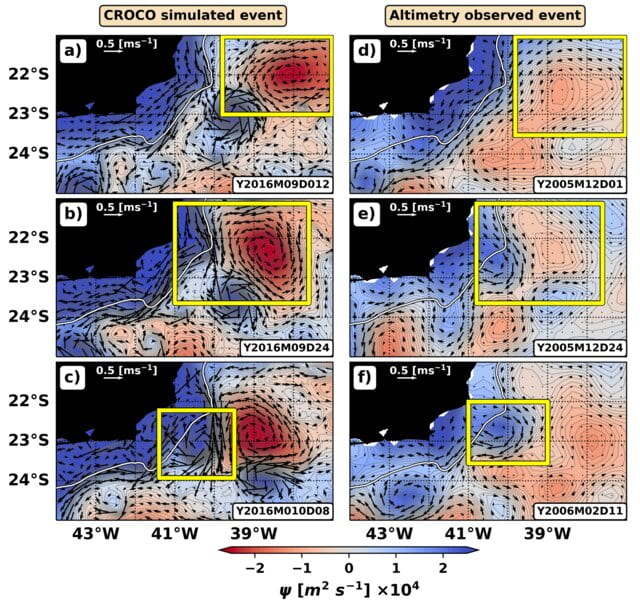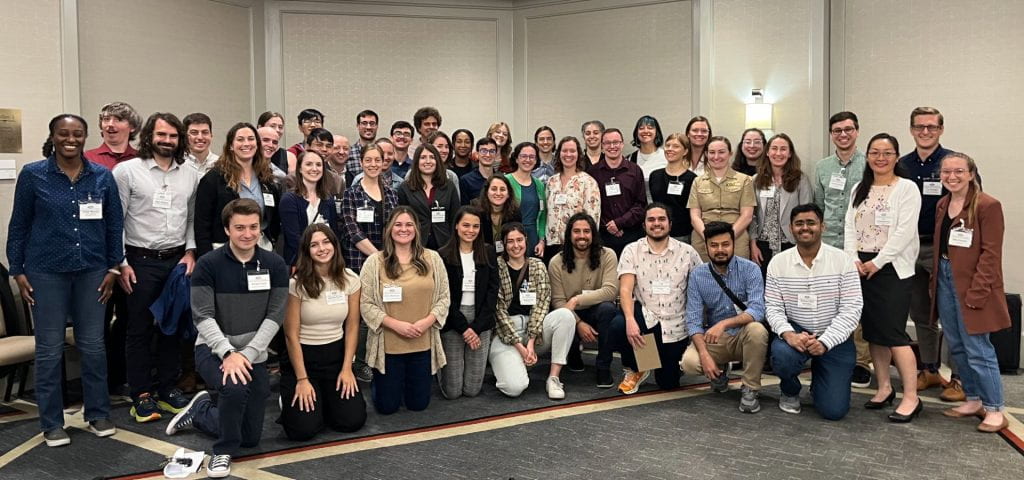We are excited to share the latest research on Journal of Physical Oceanography led by our former student, Caique Luko, who has been making remarkable strides in the field of physical oceanography in the Brazil Current region. His recent article, titled “Topographically-generated submesoscale shear instabilities associated with Brazil Current meanders,” delves into the fascinating dynamics of the interaction of the Brazil Current and the convoluted topography in the Southeast Brazil.
Authors: Caique D. Luko, Cauê Z. Lazaneo, Ilson C. A. da Silveira (Advisor), Filipe Pereira, and Amit Tandon (Co-Advisor)
The western boundary current system off southeastern Brazil is comprised of two main currents: the poleward flowing Brazil Current (BC) in the upper layer and the equatorward flowing Intermediate Western Boundary Current (IWBC) beneath it. This intricate system exhibits recurrent cyclonic meanders between 22°S and 23°S, which grow quasi-stationarily through baroclinic instability. However, the specific triggers for these meanders have remained elusive until now.
This article sought to shed light on the mechanisms initiating the formation of these mesoscale eddies by incorporating the submesoscale component into the hydrodynamic scenario. They conducted a high-resolution numerical simulation using the Coastal and Regional Ocean COmmunity model (CROCO) at a regional 1/50° (∼2-km) resolution.
Their findings unveil an intriguing process: incoming anticyclones reaching the slope upstream of separation regions induce barotropic instability, thus serving as a trigger for meander formation. This, in turn, generates submesoscale cyclones, which, in conjunction with baroclinic instability, contribute to the growth of the meanders, resulting in a submesoscale-to-mesoscale inverse cascade. As the mesoscale cyclones continue to develop, they interact with the slope, generating inertially and symmetrically unstable anticyclonic submesoscale vortices and filaments.

The arrival of incoming anticyclones and the formation of CST eddies as depicted by stream function () and geostrophic velocity () maps derived from sea-surface height data from: (a-c) a CROCO simulated event; and (d-f) an altimetry observed event. Yellow boxes display snapshots of: (a and d) the incoming anticyclone from the east; (b and e) the anticyclone hitting the continental shelf-break; and (c and f) the formation of a CST eddy downstream. The 160 m isobath (solid white line) is shown to highlight the interaction of the incoming anticyclones with the shelf-break. Regions shallower than 160 m should be analyzed with caution on panels d-f due to the limitations of altimetry data within the shelf.
Caique Luko’s research not only enhances our understanding of the complex dynamics within the western boundary current system but also highlights the importance of considering submesoscale processes in the broader hydrodynamic context. His work opens new avenues for exploring the mechanisms underlying mesoscale eddy formation in the Brazil Current region.
We are immensely proud to share that Caique Luko has continued his academic journey as a Ph.D. student at the prestigious Scripps Institution of Oceanography. This remarkable accomplishment underscores his dedication, expertise, and passion for advancing our understanding of the oceans. We congratulate Caique on his significant contributions to the field of oceanography and look forward to witnessing the continued impact of his research.
For more information about Caique Luko’s article and his ongoing research, please follow him on ResearchGate.


Recent Comments